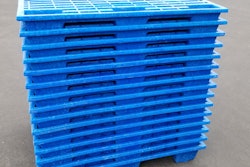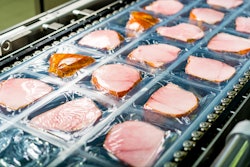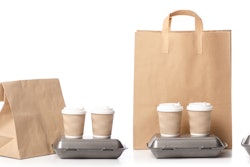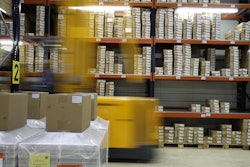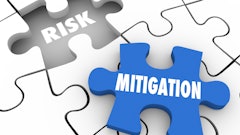
Maintaining clean production lines is a critical challenge facing cold food and beverage manufacturers. Tight regulations ensure that production processes and environments meet stringent safety guidelines. Plus, with the challenges of the current pandemic, there is justifiable concern for the health and well-being of workers throughout the industry.
When it comes to production, if products or equipment become contaminated, lines shut down, machinery is disassembled and everything needs a thorough cleaning. The impact to the bottom line can be considerable:
· Specialized contamination cleanup is very costly.
· Financial opportunity costs of a shutdown increases by the minute.
· Already processed goods must be discarded as a loss.
· The sum of these costs can be staggering.
The larger or more complicated the contamination is, the longer it takes and the more costly the remediation. When contamination isn’t caught in time—and a product ships—a costly and time-consuming product recall becomes necessary. Product recalls are expensive and can have a material impact on a company’s standing with suppliers, distributors and consumers. Damage to a brand’s reputation can take years to overcome. Most U.S. consumers can probably name at least one brand associated with a food recall.
Beyond costs, there is a real human toll. First, there is the proper health protections for workers. And, according to recent data from the CDC, approximately 48,000,000 people in the United States (about 1 in 6) become sick from foodborne illnesses; 128,000 are hospitalized; and 3,000 die from these (largely preventable) illnesses each year. Other CDC data show that 31 major pathogens acquired in the United States are responsible for these illnesses. Nontyphoidal Salmonella was found to be the leading bacterial cause of illness (11%), and the top cause of hospitalizations (35%) and death (28%). Another common foodborne bacterium, Listeria monocytogenes, is estimated to be the third-leading bacterial cause of death (19%).
Antimicrobial light—the 21st Century way to clean
Until recently, choices to combat microbial contamination within food and beverage manufacturing environments were limited, toxic and inefficient. They included:
· Aggressive and caustic chemicals for wiping and mopping.
· Power-washing and deep cleaning by specialized cleaning services.
· Disassembling equipment, cleaning it and re-building it, typically using outside services.
A new approach to mitigating contamination is with visible light. Simply put, specific (non-ultraviolet) light frequencies within the visible light spectrum are rated for continuous and unrestricted use around people. When turned on, they prevent the growth of bacteria, fungi, yeast and mold on surfaces.
Originally discovered in England in 1892 using filters and sunlight, this light has evolved to become flexible and highly efficient using the digital tuning capability of LED technology. The breadth of use cases is phenomenal, with none more compelling than food and environmental safety. In food and beverage manufacturing, these lights are configured precisely to target specific areas (throughout all zones) where microbes are present, likely to grow or likely to be transferred between zones. The key advantage of antimicrobial (non-UV) lighting is that a single LED diode emits this specialized light, enabling it to both illuminate large spaces such as manufacturing environments while constantly delivering antimicrobial dosing. This helps to provide continuous antimicrobial protection in hard-to-reach spaces, such as within the processing line itself or underneath equipment.
UV light has gained popularity in recent months with the rise of the Coronavirus disease (COVID-19), but many do not know that it’s inherently dangerous because it attacks DNA and destroys the cellular structure in all living things (including people). Antimicrobial LED light, however, meets the international standard for continuous and unrestricted use around humans. Given its approval for extended use, this provides countless advantages for this light to complement more traditional ways of cleaning. Studies also show that antimicrobial LED light has no effect on materials like gaskets, rubbers, plastic surfaces or the food itself, where UV is known to degrade such materials. This new class of antimicrobial lights cleans continuously, in contrast to the episodic spray-and-wipe approach. Once the lights are in place, this creates a layered approach to cleaning, meaning, after surfaces are wiped, the area is still being cleaned.
Delivering a cleaner bottom line
Here are seven ways antimicrobial light delivers a cleaner bottom line for cold food and beverage manufacturers.
Less unexpected downtime. This technology reduces/eliminates the need to hire expensive, specialized cleanup crews, reducing overhead costs. Full-time staff can remain productive and focused on day-to-day work, rather than allotting significant time to cleaning.
Reduce the amount of chemicals used for episodic cleaning. Chemical cleaners can be costly. An added layer of cleaning technology reduces the need for money spent on chemicals. Fewer chemicals are inherently healthier for staff and consumers, creating a cleaner overall environment.
Reduces chemicals in wastewater. LED lighting is more sustainable and “green-friendly” than harsh chemicals, which are typically packaged in single-use, non-recyclable plastics. Lighting technology lasts several years and rarely needs replacement. This decreases the potential risk for fines and helps contribute to the environment’s well-being.
Reduced equipment and machinery exposure to harsh chemicals. Using chemicals can severely degrade and permanently ruin rubbers and plastics. Reduced chemical use decreases the need for part replacements and scheduled maintenance to counteract the corrosive impact of chemical cleaning.
Less need to remove mold and biofilm. With continuous antimicrobial light, mold and biofilm will be less able to form, potentially eliminating removal costs altogether.
Less product discarded. A continuously clean environment equates to improved yields by limiting product loss caused by inadequate cleaning methods.
Reduces or eliminates risk for potential recalls. Managing a product recall is expensive in direct costs associated with distribution. Eliminating recalls maintains brand integrity and reputation, all while keeping relationships solid with suppliers, distributors and consumers.
A new foundation to a layered antimicrobial defense system
Food and beverage manufacturers can benefit from an enhanced layered approach to cleaning by leveraging the continual cleaning power of antimicrobial light technology. Once in place, these lights work continuously, creating an ideal foundational layer to keeping production environments relatively free from bacteria, fungi, yeast, mold and other microbes. By applying these lights, episodic spraying and wiping can be reduced, and there are fewer toxic chemicals, all while having a cleaner environment over time and, of course, money saved.
In a world where one bad headline can amount to millions of dollars in lost market capitalization, it’s worth taking a closer look at how this new type of continuous protection can further protect workers’ health, reduce the headaches of contamination and directly impact the bottom line.
In 2019, the FDA issued approximately 350 recalls, market withdrawals and safety alerts. Of that number, 111 were attributed to potential or confirmed microbial contamination, data that demonstrate that the incidence of bacterial growth is the leading cause of market disruption for the food and beverage industry. Regardless of the resolution of each occurrence—whether a fine, forced or voluntary recall, quiet self-directed market withdrawal or alert—a few things are certain—production in each instance was stopped; products had to be discarded; and specialized cleaning needed to be arranged as quickly as possible.





